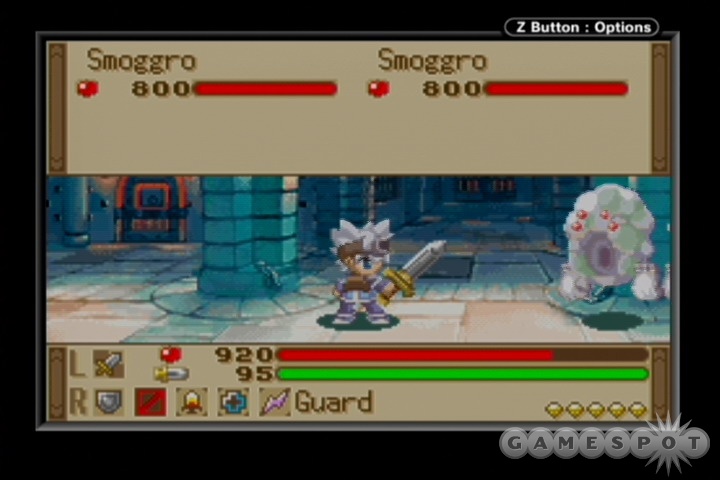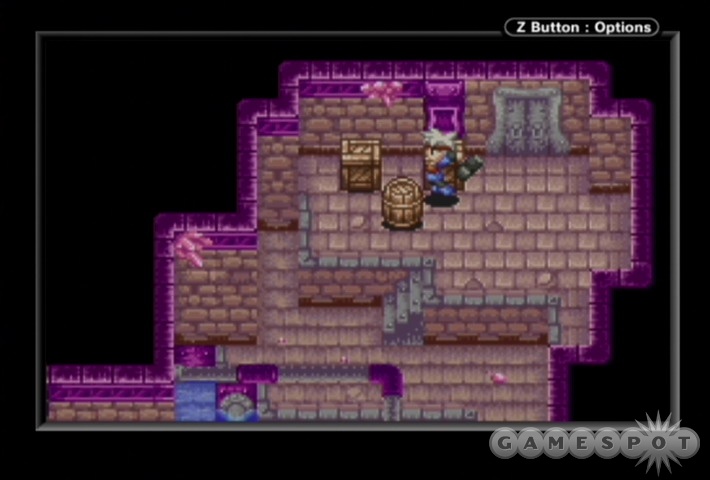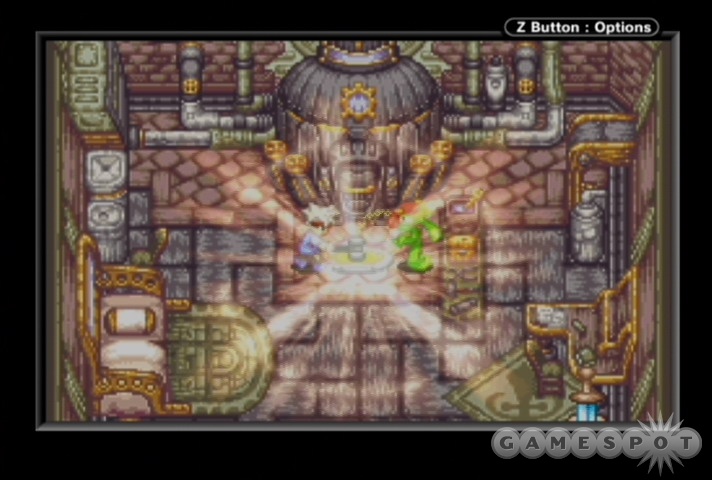Summon Night: Swordcraft Story is an action role-playing game that wisely keeps things simple and has a good time doing so. It isn't as captivating as a good, story-driven role-playing game, and the action isn't especially complex or gratifying, but Summon Night is still an enjoyable game that offers plenty of goofy humor, likable characters, and an easy but fun battle system. And while it offers some unique twists on role-playing conventions, it doesn't get bound up by nonsensical gimmicks. The result is a game that certainly won't knock your socks off but will keep you sufficiently entertained for a good 20 hours or more.

In the world of Lyndbaum, there's a city known as Wystern, the City of Swords. The city gets its name from the various guilds throughout town that specialize in creating powerful weapons from a variety of materials. The skilled workers known as craftknights are able to derive materials from everyday items and then summon magical creatures known as guardian beasts to transform those materials into weapons. At the head of each guild sits a craftlord, and the seven craftlords act as the leaders of the city. When the story begins, a tournament is being held to determine which craftknights are worthy of becoming the next craftlords. When you start the game, you can choose a male or female character, and although the characters behave slightly differently, the general plot is the same for both characters. As the story goes, your father was a powerful and highly revered craftlord who died three years ago. You don't know much about him, but you know that you want to follow in his footsteps and be a craftlord as well. So you join the tournament, hone your skills, and piece together the puzzle of what happened to your father. In doing so, you also uncover a sinister plot among the current craftlords, and it's up to you to put an end to their devious scheme.
The first half of the game is focused mostly on the events of the tournament, so you'll spend your time in the town's convenient underground labyrinth where you can collect materials to create weapons and fight all kinds of stray summon creatures to earn experience and level up. The labyrinth has 50 floors, with another 50 that are unlocked after you beat the game. Not all of those floors are open to you right away, though, so you have to fulfill other minor quests before you can progress. After you fight through a few floors of monsters and gather enough materials to create a weapon, you usually have to go to the arena and participate in a tournament battle. Winning this battle lets you move on to bigger and better quests. Later in the game, you'll get to travel to other dungeons in other cities, but they're all very similar, and the experience is practically identical. The dungeons aren't especially difficult, but they can be time consuming because you usually have to search several large floors before finding what you're looking for, and occasionally you'll have to do some extensive backtracking. This becomes tedious because, while in a dungeon, you'll be drawn into a random encounter every five steps or so, which drags down the pace of the game.
The battle system in Summon Night is simple and easy, but it can be fun. When you are in battle, the camera switches from a top-down view to a 2D side view. The battle then plays out like a beat-'em-up type of game, where you move around and attack your enemies. You can equip three different weapons to take into battle, and while you're fighting, you can switch weapons by pressing the L button. This is important because each weapon takes damage as you use it, and if all your weapons break in a battle, you'll quickly get massacred. You can also use magic while in battle, but the magic system is barely useful, and you'll only ever need it during boss battles. As you level up, your guardian beast will also level up and learn magic spells. You can equip your guardian beast with up to four different spells, which can be used during battle. You can cycle through the spells with the R button while fighting and then press the B button to cast them. The problem is that cycling though a list of five different commands while trying to fend off as many as four enemies at a time doesn't work very well. It doesn't matter much anyway, though, because the magic isn't particularly effective, and you're far better off simply mashing the attack button.

The random battles in dungeons usually require very little beyond repeated attacks, but the numerous boss battles require a bit more skill and planning. The arena battles in particular can be interesting because you're only allowed to equip one weapon, and if that weapon breaks, you automatically lose. That means that going all out with an attack will quickly lose you a battle, so you have to time your strikes carefully or hope your opponent's weapon breaks before yours does. As fun as the tournament fights are, it's a shame that the dungeon battles don't offer more variety or challenge.
How you perform in battle depends a lot on the type of weapon you use. There are five different weapon types to choose from: swords, axes, spears, knuckles, and drills. Each weapon has different characteristics, and some weapons are stronger against others. The sword is a good all-around weapon, with decent range and a strong combo attack. The spear has a long range but is slower than the sword and isn't as effective for close-range combat. Axes are very powerful but also slow, while knuckles are the opposite. Drills are powerful, as well, and they can be used to break through an enemy's guard. Each type of weapon has different moves and combos that you can perform, so you'll want to try them all out to see which best fits your play style. You can also keep multiple types equipped so that you'll be ready for anything an enemy throws at you during battle. For the most part, though, you can effectively use a single type of weapon for the entire game if you so choose.
Instead of finding weapons in treasure chests or purchasing them from vendors, you have to create them yourself using materials you've collected. You'll find an assortment of seemingly random items such as coffee cups and matchbooks, which can be broken down into four element types. You can then use these elements to create weapons. First, you have to learn the specific weapon technique from a craftlord, and you have to have enough of the right elements to be able to create that weapon. Once you have the ingredients and the recipe, you can summon your guardian beast and make the weapon. There are a ton of different weapons to create in the game, so you can constantly update your equipment to stay ahead of your enemies. It's a simple system, but it can be rewarding to fashion your own powerful weapons out of all of the junk you've collected while crawling through dungeons.

Although Summon Night came out more than three years ago in Japan, it still looks good for a Game Boy Advance game. The large character portraits are colorful and fairly expressive, and the superdeformed battle sprites and animations feature good detail and varied animation. The backgrounds in the battle sequences look especially good, as do the huge bosses that often take up most of the screen. The one weak spot in the presentation is the top-down view that you have when in a dungeon or town. Here, the sprites are blurry and barely discernable from one another, and the environments look generic and uninteresting. Rounding out the presentation are some fitting sound effects that provide appropriate noise to accompany the action in battle, and some repetitive music that's inoffensive at first but eventually starts to border on annoying.
Summon Night: Swordcraft Story is not a game that you'll remember fondly for years or even months to come, but it's an enjoyable experience while it lasts. The game does a good job of moving you from one objective to the next, but you're also free to do all the dungeon-crawling you want, so the game can take you anywhere from 10 to 20 hours to complete on your first play through. Once you finish, you'll unlock new content that will keep you playing for at least a few more hours, and there's also a link mode where you can do battle and trade items with a friend. If you aren't into that, you can play through the game from the beginning as a different character or guardian beast, which offers a fairly distinct experience each time. So if you're looking for a quick role-playing fix and don't want to get bogged down in a dense story or complex character development, you should definitely give Summon Night a try.